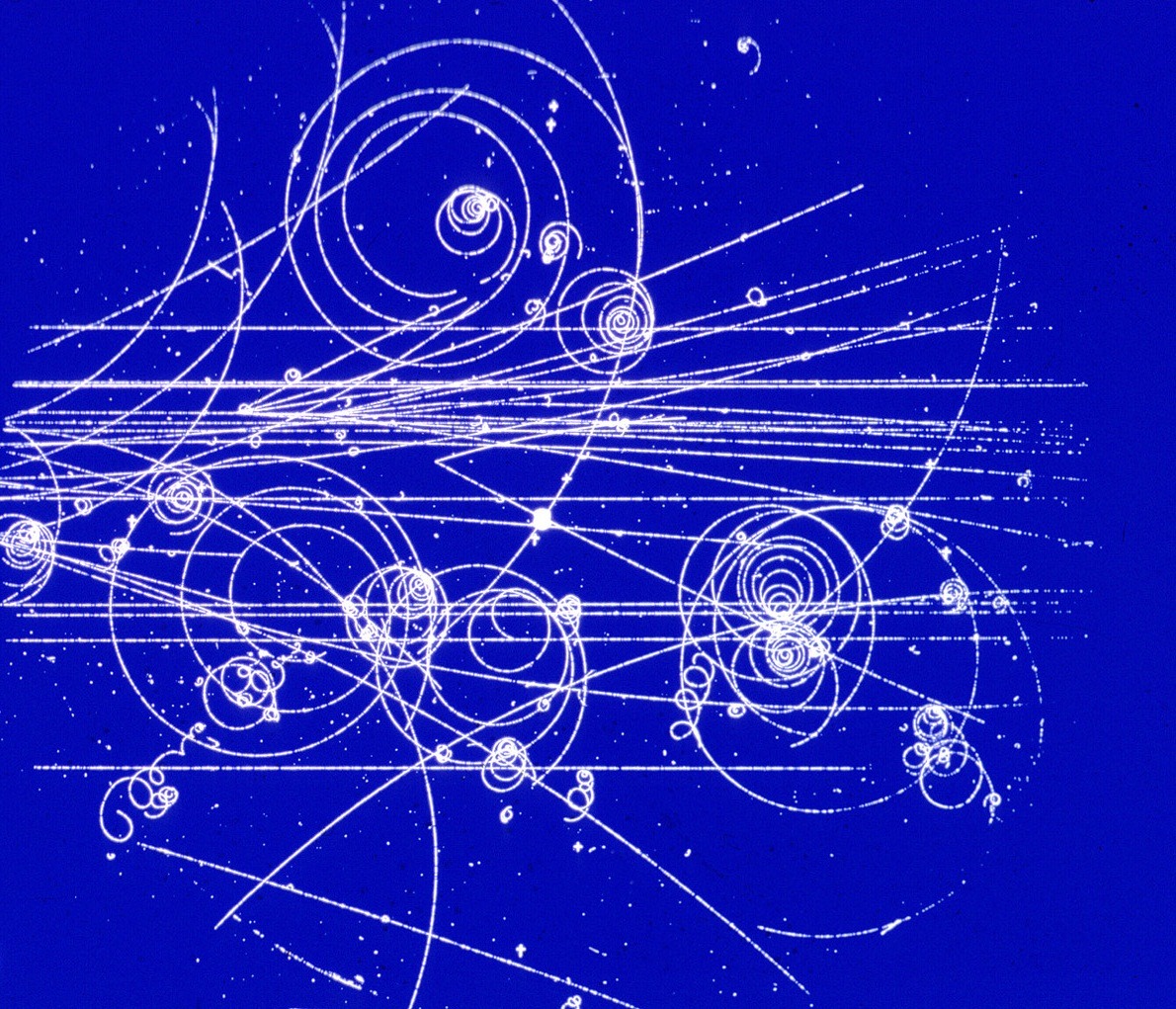This image from 1960 is of real particle tracks formed in CERN’s first liquid hydrogen bubble
This image from 1960 is of real particle tracks formed in CERN’s first liquid hydrogen bubble chamber to be used in experiments. It was a tiny detector by today’s standards at only 32 cm in diameter. Negatively charged pions with an energy of 16 GeV enter from the left. One of them interacts with a proton in the liquid hydrogen and creates sprays of new particles, including a neutral particle (a lambda) that decays to produce the “V” of two charged particle tracks at the centre. Lower-energy charged particles produced in the interactions spiral in the magnetic field of the chamber. The invention of bubble chambers in 1952 revolutionized the field of particle physics, allowing real particle tracks to be seen and photographed, after releasing the pressure that had kept a liquid above its normal boiling point.CERN Document Server. -- source link
Tumblr Blog : wonders-of-the-cosmos.tumblr.com
#cern#particle#particula#physics#fisica
